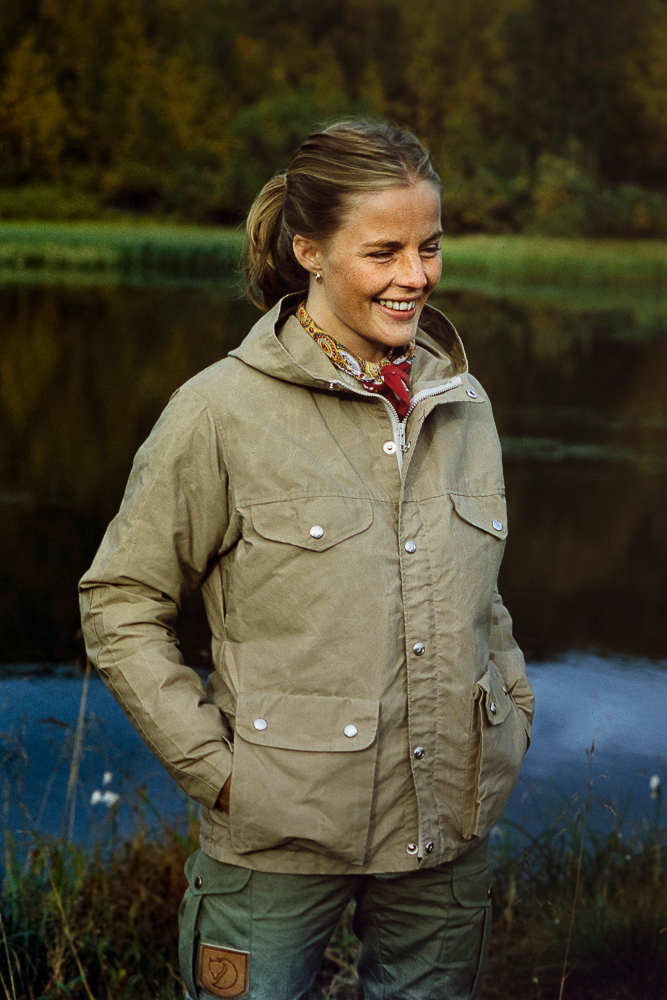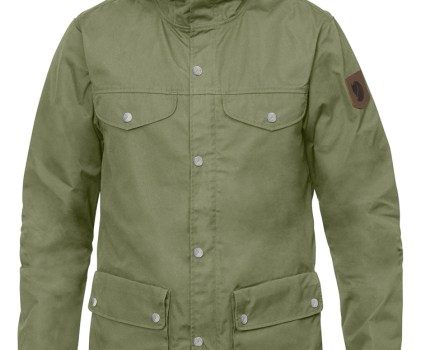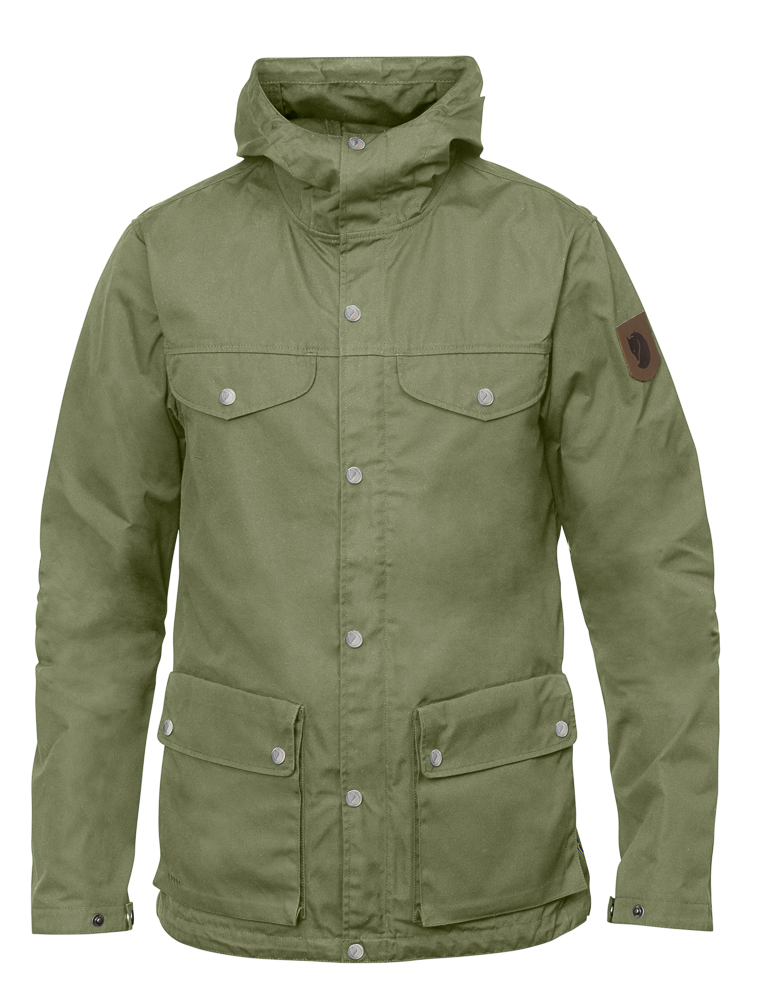Chris Townsend sees how a fifty-year-old design performs today
Back in 1968 Fjällräven launched its first garment, the Greenland Jacket. This is still around today with the same design but also, say the company, an improved fit. The fabric is still G1000 65/35 polyester cotton though the polyester is now recycled and the cotton organic. G1000 is windproof, breathable, and water-resistant. The last can be improved by treating the jacket with Fjällräven’s Greenland wax, though this will reduce breathability. As the jacket will never be fully waterproof – the seams aren’t sealed – I think it’s best used as a windproof, albeit one that will stand up to rain longer than most windproof jackets. The fabric is also quite thick, and the jacket is suitable for year-round use. Indeed, it’s a bit warm on breezy summer days. I reckon it’ll be fine in a blizzard.

Design
The Greenland Jacket has four stud-closed pockets. The top ones are wide enough for an OS map, but the flap won’t then shut. The lower ones are bellows pockets and much roomier. They’re just deep enough to close the flap over a map but of course they are cut off by a pack hipbelt. The lower pockets also give more protection to the contents as the top folds over the inside when the flap is closed, and the latter has two studs. The top pockets have single studs. There are open slots behind the lower pockets for your hands. There’s also a zipped inner pocket easily big enough for a wallet or mobile phone.
The design has one weak point and that’s the hood. It’s non-adjustable and quite big. Unless I wear a thick hat underneath it impairs visibility. In strong winds it blows back on my head. It doesn’t come right off but it does mean reduced protection. Fjällräven says it has improved the fit of the hood by adding a panel of material. The original just had a single seam down the centre. To really improve the fit and the functionality it needs a drawcord.

Performance
So how does a 53-year-old design hold up today? First, the jacket does work as a tough, breathable windproof. Other than the hood it’s kept out some very strong winds. It’s comfortable too, with a much nicer feel than most 100% synthetic windproofs. The fabric is a little stiff at first but becomes softer with use. The fabric, then, is as good as ever, which is why Fjällräven use it in many other garments. I have mixed feelings about the design. I like the stud-fastened pockets, which are quicker and easier to use than zipped ones, though I do wish the chest ones were a little deeper so they’d hold maps. I like the handwarmer slots too. The hood is a big disappointment though. Drawcords would make it much more efficient. I realise Fjällräven doesn’t want to tinker with the original design too much but as an extra panel has been added to the hood surely a drawcord could be put in as well.
The other big drawback is the weight. The Greenland Jacket is heavy. If you’ll be wearing it all the time, on a snowy winter day say, that may not be a problem though you’ll still need to carry a waterproof jacket to go over it if the weather turns wet. The weight is probably worth it if you’ll be doing a great deal of bushwhacking as the fabric is tough. It’s quiet too and so good for wildlife watching. It is adequate for hill use but would be so much more practical if the hood were adjustable.









